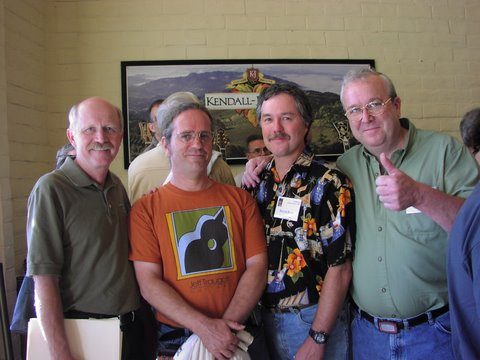MICHAEL KELLER — THE DG INTERVIEW
You do double duty, in that you are also an accomplished inlay artist as well as a builder. Some builders eschew inlay, feeling that it replaces good tone wood with “not so good” sounding shell, etc. How much inlay is too much inlay?
I have always loved the look of shell inlays on guitars. Long before I started building, I owned a Martin D41. It had abalone trim around most of the edges and sound hole. I thought it was just the most beautiful thing I had ever seen. I could take it out of its case and just look at it. Really, I think abalone and mother of pearl shell is one of the most beautiful materials you can put on a guitar.
From my first, early guitars I started cutting my own inlays. Inlays are very much like taste in food. It’s a personal thing. I have no problem with people who don’t like it. If someone wants a guitar with no inlay I will gladly build one, and never mention inlays, ever.
Early on in my guitar building career I got to meet some of the best inlay artist in the world. I met William Laskin, Chuck Erickson, and Larry Robinson through attending guitar festivals. Talk about incredible inlay work!
Those three guys are some of the best in the world. Also from attending dozens and dozens of guitar shows, I got to see many amateurs work. All of it really inspired me to become more proficient at it. While I consider myself a much better guitar maker then inlay artist, after hundreds and hundreds of inlays over 30 years, I can do fairly well.
I have heard the argument that shell replaces tone wood, and can possibly hurt the sound of the guitar. I personally think that’s a bunch of nonsense. Really I do. I can think about least 15 things that will certainly harm the sound of the guitar long before a few fingerboard and headstock inlays.
Over bracing. Too much finish. Too heavy of bracing. Too thick top and back. That’s where you harm the sound of the guitar. Not a beautiful fingerboard inlay. I just wish I had more time to do inlays. It’s a very slow process. Takes a lot of patients. But it looks so fine.
I am building a very fine guitar for inlay artist Craig Lavin. When it is done, before it is lacquered, I will send it to him to do a monster inlay on. I love it! Craig’s work is quite remarkable and getting better all the time. Stuff like this gets me very excited. I’m sorry, but it really does. I think inlays are just beautiful. I can’t wait to see what Craig does on the guitar I have built for him!

